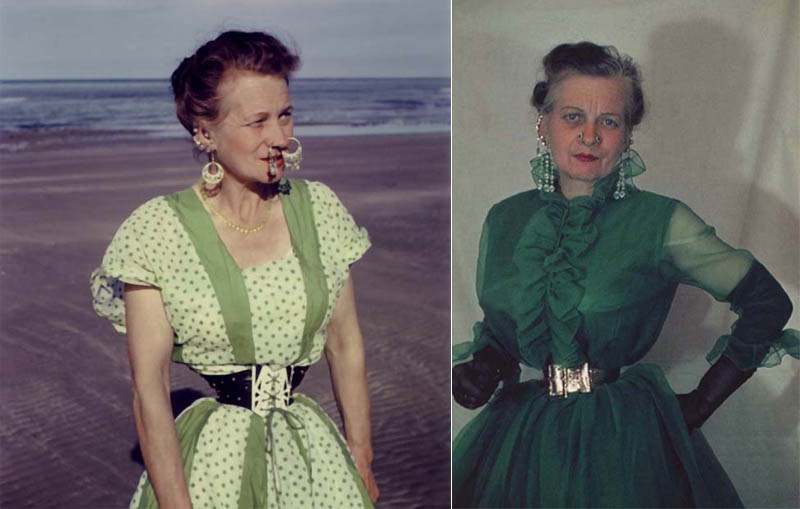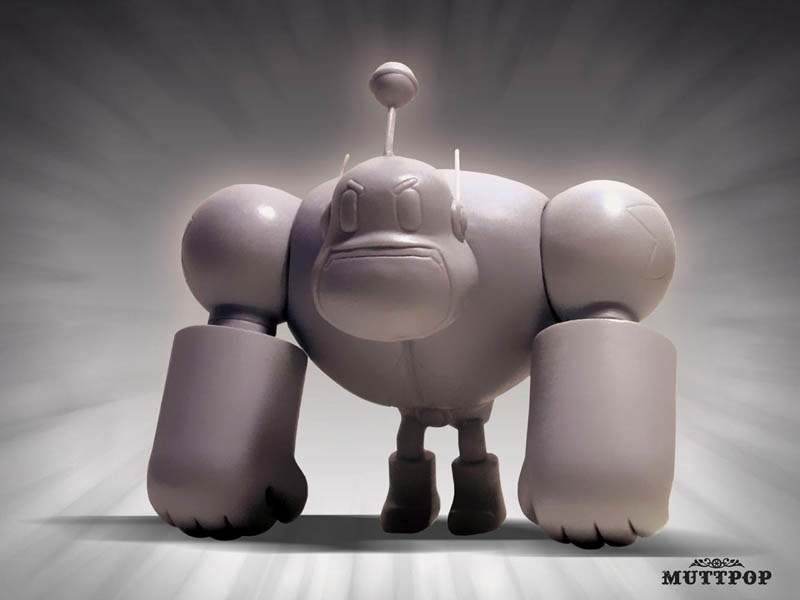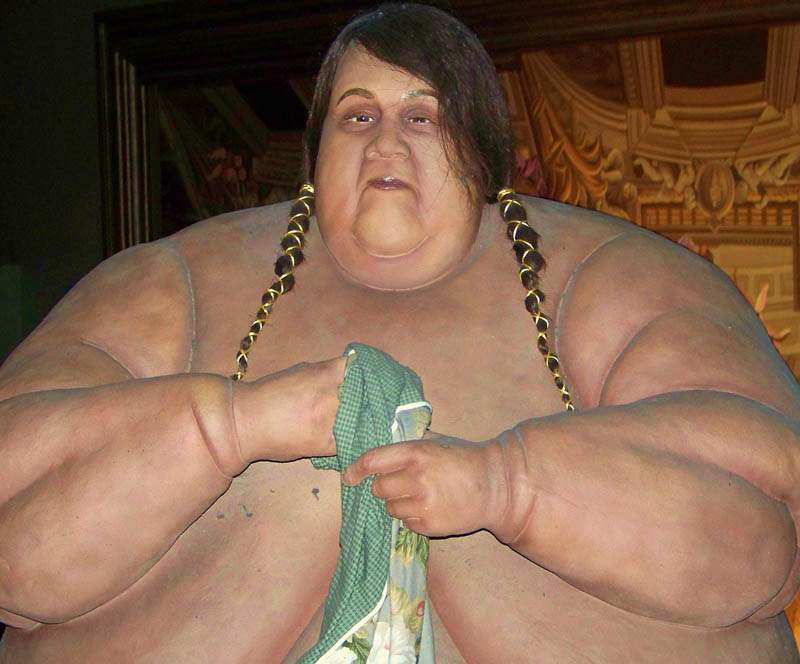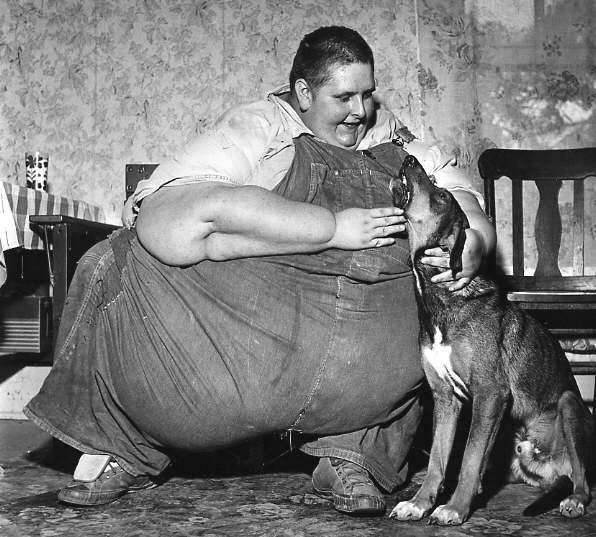Friday, May 14, 2010
Interesting Facts About INDIA!!!
When many cultures were only nomadic forest dwellers over 5000 years ago, Indians established Harappan culture in Sindhu Valley (Indus Valley Civilization)
The name 'India' is derived from the River Indus, the valleys around which were the home of the early settlers. The Aryan worshippers referred to the river Indus as the Sindhu.
The Persian invaders converted it into Hindu. The name 'Hindustan' combines Sindhu and Hindu and thus refers to the land of the Hindus.
Chess was invented in India.
Algebra, Trigonometry and Calculus are studies, which originated in India.
The 'Place Value System' and the 'Decimal System' were developed in India in 100 B.C.
The World's First Granite Temple is the Brihadeswara Temple at Tanjavur, Tamil Nadu. The shikhara of the temple is made from a single 80-tonne piece of granite. This magnificent temple was built in just five years, (between 1004 AD and 1009 AD) during the reign of Rajaraja Chola.
India is the largest democracy in the world, the 6th largest Country in the world, and one of the most ancient civilizations.
The game of Snakes & Ladders was created by the 13th century poet saint Gyandev. It was originally called 'Mokshapat'. The ladders in the game represented virtues and the snakes indicated vices. The game was played with cowrie shells and dices. In time, the game underwent several modifications, but its meaning remained the same, i.e. good deeds take people to heaven and evil to a cycle of re-births.
The world's highest cricket ground is in Chail, Himachal Pradesh. Built in 1893 after leveling a hilltop, this cricket pitch is 2444 meters above sea level.
India has the largest number of Post Offices in the world.
The largest employer in the world is the Indian Railways, employing over a million people.
The world's first university was established in Takshila in 700 BC. More than 10,500 students from all over the world studied more than 60 subjects. The University of Nalanda built in the 4th century was one of the greatest achievements of ancient India in the field of education.
Ayurveda is the earliest school of medicine known to mankind. The Father of Medicine, Charaka, consolidated Ayurveda 2500 years ago.
India was one of the richest countries till the time of British rule in the early 17th Century. Christopher Columbus, attracted by India's wealth, had come looking for a sea route to India when he discovered America by mistake.
The Art of Navigation & Navigating was born in the river Sindh over 6000 years ago. The very word Navigation is derived from the Sanskrit word 'NAVGATIH'. The word navy is also derived from the Sanskrit word 'Nou'.
Bhaskaracharya rightly calculated the time taken by the earth to orbit the Sun hundreds of years before the astronomer Smart. According to his calculation, the time taken by the Earth to orbit the Sun was 365.258756484 days.
The value of "pi" was first calculated by the Indian Mathematician Budhayana, and he explained the concept of what is known as the Pythagorean Theorem. He discovered this in the 6th century, long before the European mathematicians.
Algebra, Trigonometry and Calculus also originated in India.Quadratic Equations were used by Sridharacharya in the 11th century. The largest numbers the Greeks and the Romans used were 106 whereas Hindus used numbers as big as 10*53 (i.e. 10 to the power of 53) with specific names as early as 5000 B.C.during the Vedic period.Even today, the largest used number is Terra: 10*12(10 to the power of 12).
Until 1896, India was the only source of diamonds in the world
(Source: Gemological Institute of America).
The Baily Bridge is the highest bridge in the world. It is located in the Ladakh valley between the Dras and Suru rivers in the Himalayan mountains. It was built by the Indian Army in August 1982.
Sushruta is regarded as the Father of Surgery. Over2600 years ago Sushrata & his team conducted complicated surgeries like cataract, artificial limbs, cesareans, fractures, urinary stones, plastic surgery and brain surgeries.
Usage of anaesthesia was well known in ancient Indian medicine. Detailed knowledge of anatomy, embryology, digestion, metabolism,physiology, etiology, genetics and immunity is also found in many ancient Indian texts.
India exports software to 90 countries.
The four religions born in India - Hinduism, Buddhism, Jainism, and Sikhism, are followed by 25% of the world's population.
Jainism and Buddhism were founded in India in 600 B.C. and 500 B.C. respectively.
Islam is India's and the world's second largest religion.
There are 300,000 active mosques in India, more than in any other country, including the Muslim world.
The oldest European church and synagogue in India are in the city of Cochin. They were built in 1503 and 1568 respectively.
Jews and Christians have lived continuously in India since 200 B.C. and 52 A.D. respectively
The largest religious building in the world is Angkor Wat, a Hindu Temple in Cambodia built at the end of the 11th century.
The Vishnu Temple in the city of Tirupathi built in the 10th century, is the world's largest religious pilgrimage destination. Larger than either Rome or Mecca, an average of 30,000 visitors donate $6 million (US) to the temple everyday.
Sikhism originated in the Holy city of Amritsar in Punjab. Famous for housing the Golden Temple, the city was founded in 1577.
Varanasi, also known as Benaras, was called "the Ancient City" when Lord Buddha visited it in 500 B.C., and is the oldest, continuously inhabited city in the world today.
India provides safety for more than 300,000 refugees originally from Sri Lanka, Tibet, Bhutan, Afghanistan and Bangladesh, who escaped to flee religious and political persecution.
His Holiness, the Dalai Lama, the exiled spiritual leader of Tibetan Buddhists, runs his government in exile from Dharmashala in northern India.
Martial Arts were first created in India, and later spread to Asia by Buddhist missionaries.
Yoga has its origins in India and has existed for over 5,000 years.
Source: National Portal Content Management Team
Thursday, May 13, 2010
More Amazing facts
--If you yelled for 8 years, 7 months and 6 days, you would have produced enough sound energy to heat one cup of coffee.
--The human heart creates enough pressure while pumping to squirt blood 30 feet.
--On average people fear spiders more than they do death.
--The strongest muscle in the body is the TONGUE.
--It's impossible to sneeze with your eyes open.
--Americans on the average eat 18 acres of pizza every day.
--Did you know that you are more likely to be killed by a champagne cork than by a poisonous spider?
--Right-handed people live, on average, nine years longer than left-handed people do.
-In ancient Egypt, Priests plucked EVERY hair from their bodies, including their eyebrows and eyelashes.
-- The act of snapping one's fingers is called a "fillip".
-----The dot on top of the letter 'i' is called a tittle.
-- Skepticisms is the longest word that alternates hands when typing.
---Any number, squared, is equal to one more than the numbers on either side of it -- 4x6 is 24, 5x5 is 25 etc.
--A "hairbreadth away" is 1/48 of an inch.
--The word four has four letters. In the English language there is no other number whose number of letters is equal to its value.
--The king of hearts is the only king without a moustache.
----No piece of square dry paper can be folded more than 7 times in half.
--A crocodile cannot stick its tongue out.
--The ant can lift 50 times its own weight, can pull 30 times its own weight and always falls over on its right side when intoxicated.
--Polar bears are left handed.
--The catfish has over 27,000 taste buds, that makes the catfish rank #1 for animal having the most taste buds.
--The flea can jump 350 times its body length, that is like a human jumping the length of a football field.
--Butterflies taste with their feet.
--. It is impossible to sneeze and keep ones eye's open at the same time.
--Elephants are the only animals that can't jump. ( thankfully !!)
--A cat's urine glows under a black light.
--An ostrich's eye is bigger than it's brain.
--Cockroaches can change course as many as 25 times in one second, making them the most nimble animals known.
--Mosquitoes do not bite. They stab. A mosquito has no jaws, hence when attacking a victim, it pierces it with its long proboscis and sucks the blood up through it's nasal tube.
--Starfishes haven't got brains.
- Ostriches live about 75 years and can reproduce for 50 years.
- Some breeds of vultures can fly at altitudes as high as 36,900 feet.
--The skin of the armpits can harbor up to 516,000 bacteria per square inch, while drier areas, such as the forearms, have only about 13,000 bacteria per square inch on them.
--The most destructive disease is malaria. More than 1.5 million people die from malaria every year
-A light year is 5,865,696,000,000 miles or about 9,460,800,000,000 kilometers.
A light nanosecond is the distance light can travel in a billionth of a second and is 1 foot or about 30 cm.
INTERCHANGEABILITY contains the words THREE, EIGHT, NINE, TEN, THIRTEEN, THIRTY, THIRTY-NINE, EIGHTY, EIGHTY-NINE, NINETY, and NINETY-EIGHT
One thousand contains the letter A, but none of the words from one to nine hundred ninety-nine has an A.
FOUR has four letters; no other number has this property in English such that the number of letters in the name equals the number.
Some words with horizontal symmetry (they reflect themselves across a horizontal line) are: BEDECKED, BOOHOOED, CEBID (a type of monkey), CHECKBOOK, CHOICE, CODEBOOK, COOKBOOK, DECIDED, DIOXIDE, DOBCHICK, EXCEEDED, HIDE, HOODOOED, ICEBOX, KEBOBBED, OBOE, OKEECHOBEE.
Some words with vertical symmetry are MOM, WOW, OTTO, MAAM, MA'AM, TOOT, AHA, AA, AHA, AIA, AMA, AVA, AWA, HAH, HOH, HUH, MAM, MIM, MM, MUM, OHO, OO, OXO, TAT, TIT, TOT, TUT, UTU, VAV, WAW.
R.S.V.P. comes from the French phrase, 'répondez, s'il vous plaît,' which means 'please reply.' According to western etiquette, you should reply promptly if you receive a formal invitation.
A mile on the ocean and a mile on land are not the same distance. On the ocean, a nautical mile measures 6,080 feet. A land or statute mile is 5,280 feet.
A nanosecond (ns or nsec) is one billionth (10-9) of a second and is a common measurement of read or write access time to random access memory
INTESTINES has each of its letters occurring twice. Some other such words: APPEASES, ARRAIGNING, BERIBERI, BILABIAL, CAUCASUS, CHOWCHOW, CONCISIONS, COUSCOUS, ESOPHAGOGRAPHERS, FROUFROU, GENSENGS, GREEGREE, GUITGUIT, HAPPENCHANCE, HORSESHOER, HOTSHOTS, JIPIJAPA, MAHIMAHI, MESOSOME, MILLIEME, MIMETITE, RAPPAREE, REAPPEAR, SCINTILLESCENT, SHAMMASH, SHANGHAIINGS, TEAMMATE, UNSUFFICIENCES, VETITIVE
There are three sets of letters on the standard typewriter and computer keyboards which are in alphabetical order, reading left to right. They are f-g-h, j-k-l, and o-p.
Bird records
- The largest bird in the world today is the Ostrich Struthio camelus. The North African Ostrich subspecies is the tallest of all the Ostriches. Males can be 2.74 m tall. The head and neck can be 1.4 m long. The average height is around 2 m.
- The smallest bird in the world is either the Bee Hummingbird Mellisuga helenae from Cuba and the Isle of Pines or the Little Woodstar Acestrura bombus of Ecuador and northern Peru. The male hummingbird is 57 mm and weighs 1.6 g. Half of its length is taken up by the bill and the tail. Some experts think the Woodstar is even smaller.
- The bird with the largest wingspan is the Wandering Albatross Diomedea exulans which lives in the southern oceans. Its wings average 2.54 - 3.51 m. The largest recorded wingspan was of a very old male whose wings measured 3.63 m.
- The Australian Pelican Pelecanus conspicillatus has the longest bill of any bill measuring 34 - 47 cm.
- The bird with the longest bill to body size is the Sword-billed Hummingbird Ensifera ensifera that lives in the high Andes from Venezuela to Bolivia. Its bill is 10.2 cm long, four times longer than the bird's body, not counting the tail.
- Ostriches Struthio camelus have the longest legs. Their legs can be up to 1.3 m long.
- A number of swifts have the shortest legs. Their family name Apodidae means 'lacking legs'.
- Jacanas (Jacanidae family) have the longest toes relative to body length. Some of the larger Jacanas can have 'toespans' of at least 15 cm.
- The Phoenix Fowl has the longest feathers. The upper tail can grow for six years and one measured 10.6 m. The Phoenix Fowl has been bred as an ornamental bird in Japan since the mid 17th century and is a breed of the Red Jungle Fowl Gallus gallus.
- The longest feathers of a wild bird relative to body size, are the central tail feathers of the male Ribbon-tailed Bird of Paradise Asptrapia mayeri. It lives in the mountain rainforest of New Guinea.
- The most feathers ever counted on one bird was 25 216 on the Tundra Swan Cygnus columbianus. 80 per cent of feathers were on the bird's head.
- The least number of feathers ever counted was 940 on a Ruby-throated Hummingbird Archilochus colubris. But this bird, relative to its body size, has more feathers than most other birds. It measures only 9 cm.
- The Peregrine Falcon Falco peregrinus is the fastest bird and fastest of any kind of animal. It can reach speeds of at least 200 km when diving for prey in the air.
- Hummingbirds have the fastest wingbeat. The Horned Sungem Heliactin cornuta, in tropical South America beats its wings at 90 beats per second.
- Hummingbirds, Family Trochilidae have been recorded in experiments, hovering for 50 minutes.
- The Artic Tern Sterna paradisaea is believed to migrate the furthest. It flies from the shores of the Arctic to the Antarctic. One banded Arctic Tern cover 22 530 km flying from the White Sea Coast of Russia to Fremantle, Western Australia.
- Relative to body size the Long Rufous Humingbird Selasphorus rufus makes the longest migration. It measures 10 cm and flies from as far north as Alaska to Mexico and back again - 10 000 km.
- The highest recorded altitude for any bird was 11 277 m for a Ruppell's Griffon Vulture Gyps Rueppellii. It flew into a plane.
- The largest bird egg is from the Ostrich Sturthio camelus. The egg measures 15 - 20 cm long, 10 - 15 cm in diameter and weighs 1 - 1.78 kg.
- The smallest known egg is the egg of the Vervain Hummingbird Mellisuga minima of Jamacia and nearby islets. The egg is barely the size of a pea and measures less than 10 mm in length and weighs 0.356 g.
- The largest nest was built by a pair of Bald Eagles Haliaeetus leucocephalus was 2.9 m wide and 6 m deep.
- The Mallee Fowl Leipoa ocellata of Australia builds a mound for a nest. These mounds have been measured at 4.57 m high and 10.6 m long. A mound this size means the bird moved 250 cubic metres of vegetation and 300 tonnes of soil.
- The Rhinoceros Auklet Cerorhinca monocerata which measures 35 cm and nests on islands in the North Pacific excavates a burrow of 2 - 3 m in length. Burrows up to 6 m are not uncommon and 8 m burrows have also been found.
- Emperor Penguins Aptenodytes forsteri make the deepest dive of any bird ranging from 444 - 483 m. They also stay under water the longest. The maximum dive time recorded has been 18 minutes.
- The fastest swimmer is probably the Gentoo Penguin Pygoscelis papua at 27 km per hour.
- The fastest runner is the Ostrich Struthio camelus. It can run up to 72 km per hour over short distances.
- The only poisonous birds known are the three species of Pitohui from Papua new Guinea - the Hooded Pitohui Pitohui dichrous the Rusty Pitohui P. ferrugineus and the Variable Pitohui P. kirhocephalus. The Hooded Pitohui is the deadliest. The skin and feathers contain almost the same homobatrachotoxin as the Poison Arrow Frogs.
Courtesy http://www.amonline.net.au/webinabox/birds/about/records.htm
Amazing facts
| A mouse is so small compared to an elephant, that an elephant does not even know that there is a mouse close to it !! Click here for more facts about elephants! The typical laboratory mouse runs 2.5 miles per night on its treadmill. A rat can last longer without water than a camel. The mouse is the most common mammal in the US. |
|
The elephant is the largest animal on land. But it is much smaller than the blue whale.
| The SIBERIAN TIGER is the largest cat in the world. It weighs up to 300kg (660 lbs) and can eat 27,2 kg (60 lb) of meat at one mealtime. |
|
Did you know moths are not really attracted to light? Moths fly towards the blackest point which is behind the light.
|
Did you know Sailor, Dead Leaf, Paper Kite, Blue Striped Crow, Julia and Great Egg Fly are all names of BUTTERFLIES |
|
The rhino is a primitive-looking animal. They have looked the same for thousands of years. There are two species of rhino: the white (or square-lipped rhino) and the black (or hooked-lipped rhino). The black rhino has three toes on each foot. Both the black and white rhino have two horns.
| The rhinoceros's horn is made of the same stuff found in our hair and fingernails which is called keratin. It also contains something called gelatin.
Ancients Greeks believed earthquakes were caused by giants fighting underneath the ground. The Ancient Japanese thought there was a giant spider living under the earth, and each time it moved, it caused the earth to quake |
| There are over 900 different types of bats and they can all fly. The Vampire bat has less teeth than the other bats because it doesn't chew its food. It lives on the blood of mammals. Bats do not need to see when they fly, they use sound to help them figure out where they are going. Bats always turn left when exiting a cave.
|
| Our body has some natural protection for our eyes. Our eyelashes help to keep dirt out of our eyes. |
| Hundreds of years ago, rockets were invented in China. The first rockets were shaped like arrows and they were not very powerful. The power of early rockets came from gunpowder. |
Do you know why people are hooked or addicted to cigarettes? The ANSWER is a chemical called Nicotine (Pronounced as: nih-keh-teen)......This chemical is found in stinky cigarettes and is the reason why people get hooked on the smoking habit. Say no to cigaretes - YUCKS !! it's Horrible! Smoking gives you bad breath, makes you cough, and is responsible for many diseases including cancer.
The humans-some interesting facts from guinness world book of records
The longest woman’s beard.
The “bearded lady” Janice Daveri from Kentucky, USA had the longest beard ever sine 1884 and it was 36 cm long. Unfortunately we couldn’t find her photos but we have found an interesting blog: beardedwoman.wordpress.com Take a look you will understand what it is like being a woman with the beard.

The longest mustache
Hookah Ramdzhi Saina from India was sprouting whiskers from 1976. In July 1993 they spread for as long ad 3.39 m. The length of the right whisker equaled 1.72 m and the left one was 1.67 m.
Photos from World Beard and Mustache Competition.

The earliest teeth
The world knows several cases when children were born with teeth. Shin Kini was born with 12 teeth in his mouth on April 10th 1990 in Berkshire, United Kingdom. They have been removed since he could bite his mother when breast feeding.
The oldest milk tooth
Gladys Turner who was born in 1920 in West Sussex, United Kingdom, preserved milk tooth, which was 75 years old in 1995. The photo below is not Gladys but it’s an amazing pic.
The largest waist
Waist of Walter Hudson from New York at his maximum weight of 545 kg came to 3.02 m.
Photo from exhibit at Ripley’s NYC.
The smallest waist
The smallest waist belongs to Ethel Grainger from Cambridgeshire, United Kingdom. In 1939 her waist was 33 cm only.

And this is the photo of Cathie Jung with the 38 cm waist.

The longest neck
Women of Myanmar (Burma) from the Padaung tribe put rings on their necks to lengthen them. The registered record for the longest neck is 40 cm.
The biggest chest
Robert Earl Hughes from United States, who lived in 1926- 1958, had a 3,15 m chest girth
Biggest biceps
The size of the right biceps of Denis Sester from Minnesota, United States is 77.8 cm in the relaxed state.

The longest fingernails
Measuring 5 fingernails on the left hand of Shridhar Chillal from India at the end of March 1997 showed that the total length of nails comes to 6.12 m.
That’s the photo of Shridhar Chillal and Lee Redmond (who had a car crash in February 2009 and had to cut her nails).

The highest man
The highest man that the world knows about was Robert Pershing Wadlow, born in 1918 in Illinois, USA. In June 1940, his height was 2.72 m. and the weight 222.7 kg

The tallest woman
Sen Chunlin was born in China in 1964. By the time of death on February 1982 her height reached 2.48 m. However, this figure takes into account the curvature of its spine, because she suffered severe scoliosis and could not sit completely straight.
Most unlike spouses
Fabian Preto and Natalie Lokyu got married on 14th 1990 in France. His height is 1,885 m while Natalie is only 94 cm high, which means that Fabian is twice as high as Natalie.
The smallest woman
The smallest female was Pauline Musters, known as the Princess Pauline. She was born in 1876 in Netherlands. By 9 years her height was 50 cm only and her weight was 1.5 kg. By the time of death her height was 61 cm.
The fattest man
John Brauwers Minnok from USA was born in 1963. He was about 1,85 m high and his weight in 1966 cam to 317 kg and in September of 1976 it was 442 kg. In March 1978 Minnok weighed over 635 kg.
The fattest women
There are records that show that the weight of Rosalie Bradford born in 1943 in United States, registered in January 1987, was 544 kg. Keeping to strict diet she made an unbelievable thing and in February 1994 she already weighed 128 kg. Sorry about this image guys, but there’s not much of her photos online.

The thinnest person
Lucia Zarate (1863 – 89) from Mexico in her 17 years was the exhausted lilliputian who weighted 2.13 kg being 67 cm high.
The largest number of children
The largest number of children born by a single mother ever is 69. The record belongs to the wife of the Russian peasant Feodor Vasilyev who gave birth 27 times between 1725 and 1765 (16 twines, 7 trines and 4 times 4 children). Only 2 children died in infancy. The photos below are not of their family since they lived long ling ago.

Hiccup
Charles Osborne from Iowa, United States, began hiccuping in 1922 and stopped in 1990 only. He led a usual life, was married twice and had 8 children.
Sneeze
Doina Griffiths from United Kingdom began to sneeze January 13, 1981. Having sneezed about a million of times within the first 365 days, she kept sneezing for the next 614 days.
A cat can run about 20 kilometres per hour (12 miles per hour) when it grows up. This one is going nowhere today - it is too lazy !. |
A cheetah can run 76 kilometres per hour (46 miles per hour) - that's really fast! The fastest human beings runs only about 30 kilometres per hour (18 miles per hour). a cheetah does not roar like a lion - it purrs like a cat (meow). |
| A Zipper joins two pieces of material together.A zipper is used everywhere, on clothing, pencil cases, boots and suitcases, wallets, and a zillion other things. Everyone thinks it was Whitcomb Judson who invented the zipper but it was really Elias Howe. Elias was so busy inventing the sewing machine that he didn't get around to selling his zipper invention which he called a "clothing closure".
| Did you know Sailor, Dead Leaf, Paper Kite, Blue Striped Crow, Julia and Great Egg Fly are all names of BUTTERFLIES The original name for the butterfly was 'flutterby'! |
| (Picture of a grizzly bear) Bears whose brown fur is tipped with lighter-colored hairs are called grizzly bears . The smallest species of bears is called sun or Malayan bears. Male bears are called boars. Bears are native to the continents of North America, Asia, Europe, and South America. Alaskan brown bears, world's largest meat-eating animals that live on land, can weigh as much as 1,700 pounds (771 kilograms)
|
(frog) The largest frog in the world is called Goliath frog. Frogs start their lives as 'eggs' often laid in or near fresh water. Frogs live on all continents except Antarctica. Frogs belong to a group of animals called amphibians.
|
| There are more than 50 different kinds of kangaroos. Kangaroos are native of Australia. A group of kangaroos is called a mob. Young kangaroos are called joeys. |
No two zebras have stripes that are exactly alike. Zebras enemies include hyenas, wild dogs, and lions. Male zebras are called stallions. Zebras usually travel in herds.
| ||
| |||
In this section are reported all those theories that represent in the fields of science and research a substantial innovation. Discoveries, data, and theories that today do not find a "logical" collocation in the rational framework of the present scientific model of our world and that perhaps represent the frontier of a wider way to understand the essence on which the universe is really based.
…. The whole of nature, in its wider meaning, with all the biotic and non-biotic components is in effect, in extreme synthesis, a thermodynamic whole, a whole where every part, every monad, contributes to using the available energy of matter in the best way, to using the potentiality of matter.
This complex and, at first sight, incomprehensible variability, difference, allows the maximum exploitation of "fuel matter", raising to the possible limit its energy output. This first aspect can only lead to one consideration: in this Grand Design, the Designer has taken care not to waste anything of his tangible creation; he has taken care not to under-use even a single electron of it; worried; "God does not play dice with the world" (A. Einstein).
To understand these affirmations better we can make some examples which take their cue from simple thermodynamic concepts, from nature, from the world:
1. we can compare the environment to a whole constituted by elementary cells (monads), each of which possesses its own definable energy level which is in continuous evolution and in continuous contact (interchange) with other cells.
2. every monad is in turn composed by a series of components (organisms, energy resources, etc.) which inside it have the function of raising the overall energy output.
3. every monad is therefore a system (a whole) which is able to draw the maximum energy from the total matter of which it is composed.
4. in nature the development of energy proceeds therefore with the maximum output and low quantities of entropy, that is, of wasted energy.
Through the use of the modern terminology, we can say that in nature everything proceeds with the "method" of clean energy, where the concept of clean is obviously referable to the obtainable maximum output, and to the consequent low production of by-products of the reactions, of waste.
It appears evident then that the production of energy is obtainable or through the "clean" method, regulated by the natural system, or through alternative methods, which the more different they are form these, the dirtier they will be.
It is therefore easy enough to understand how every form of "pollution" is nothing but a bad management of matter; a "bad" knowledge of the potentiality of this which, to produce better, must be organized as it is in the natural system; it has to become different and wisely organized.
In short, we are able to write the following relationship: where S is the entropy produced in a cycle which is different to the natural one and s is the one coming from natural systems.
S will evidently tend to be ever greater or, at least, equal to s, and the following equation represents the ability to "pollute" of a thermodynamic system, as opposed to natural systems or ecosystems.
S - s ³ 0
For simplicity, let’s call this function I.
This function that we call pollution represents therefore a bad, or if we want, imperfect, not optimal, use of the energy potential of matter. The pollution represents, therefore, a function of the most greatest entropies produced by systems which are "distant" from those developed in nature and derived therefore from its organizational logic.
We have given a definition of pollution, if this be allowed, which not only is technical , but also metaphysical. The more man tries understand and therefore to imitate the logic of nature, the more he will harmonize himself with the evolutionary tendency of the universe, with its inexorable progress.
The more man understands this design, the closer he will be to the desire of the Creator of the world, not only from a philosophical point of view, but also from a practical one. We have arrived therefore at a rational definition (please forgive my extreme summary) of the concepts of clean or good energy and dirty or bad energy; the concept of pollution as a product of man’s bad knowledge and use of the things which have been created.
Physical pollution as a tangible reality of metaphysical pollution. The dirty conscience….
taken from the book: Dalla materia al Padre (from matter to the Father)
by Guido Bissanti













